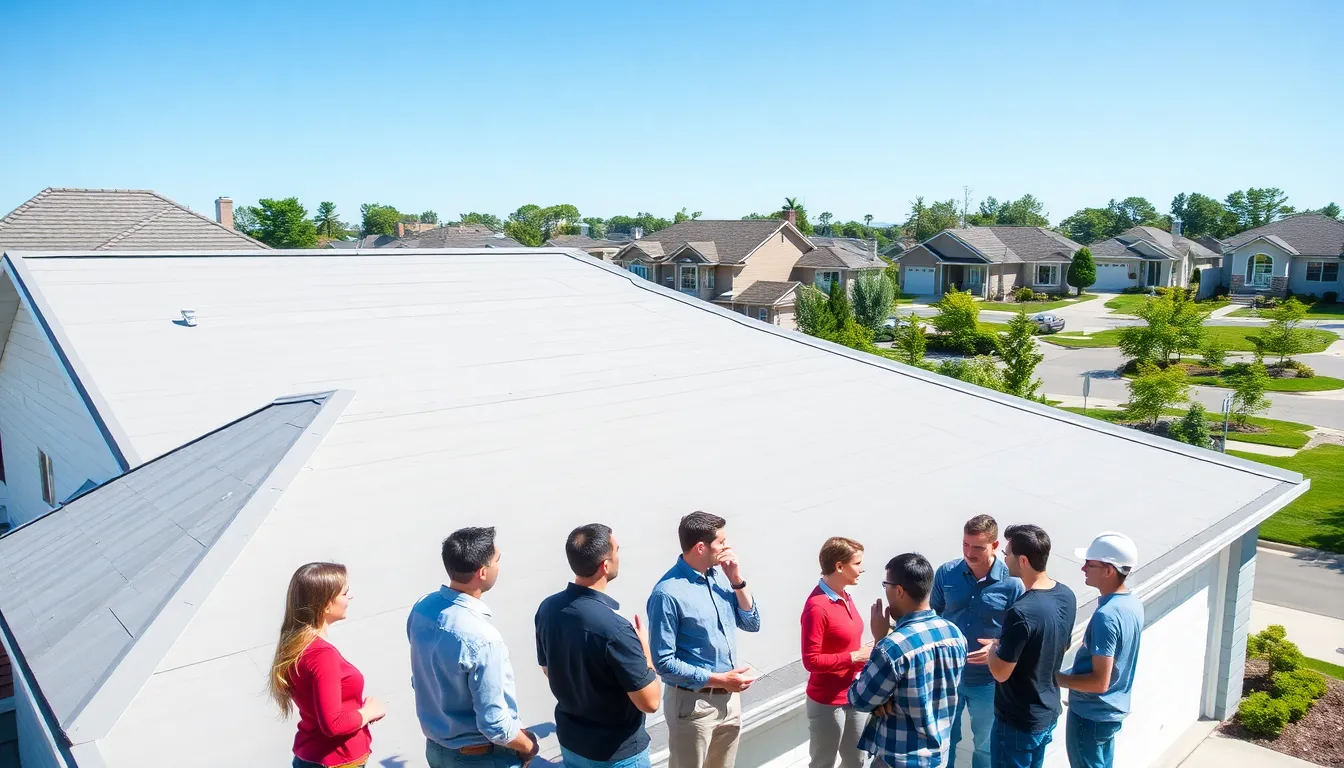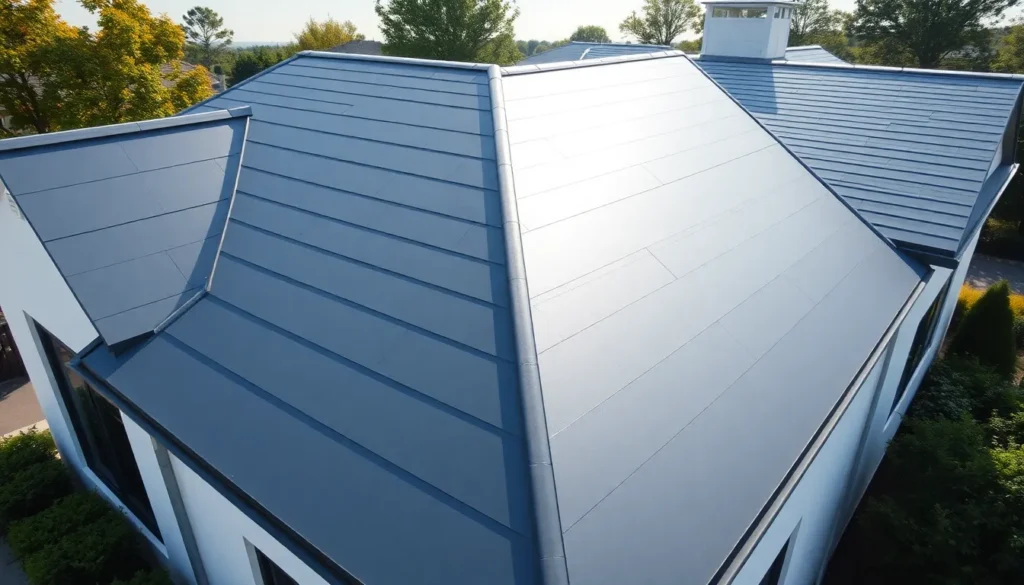Table of Contents
ToggleWhen it comes to roofing, the choices can be overwhelming. If you’ve scrolled through endless options and felt more confused than before, you’re not alone. But let’s cut through the noise. Vinyl roofing is becoming the talk of the town, and for good reason. Imagine a durable option that not only saves you headaches during maintenance but is also easy on the wallet. Sounds like a dream, right? Let’s jump into why vinyl should be at the top of your list.
What Is Vinyl Roofing?

Vinyl roofing is a type of roofing material made primarily from polyvinyl chloride (PVC). Many homeowners may associate vinyl with siding, but the same durable and versatile characteristics apply. This material is lightweight, flexible, and offers a wide variety of designs to choose from. Essentially, it provides excellent protection against weather elements while adding aesthetic appeal to your home. Vinyl roofing comes in several styles, making it an attractive option for both modern and traditional homes.
Benefits of Vinyl Roofing
Durability and Maintenance
One of the standout features of vinyl roofing is its impressive durability. Resistant to wind, rain, and even sunshine, it can handle almost anything Mother Nature throws its way. Homeowners appreciate its low-maintenance nature. Unlike wood or asphalt shingles, which require regular upkeep, vinyl maintains its appearance with minimal effort. A quick wash to remove dirt or grime every now and then is about all it takes.
Cost-Effectiveness
Let’s talk about the elephant in the room: cost. Vinyl roofing is often cheaper than traditional materials, and when you factor in its lifespan and low maintenance costs, it proves to be a wise financial investment. Many homeowners have reported significant savings over the years, making it an appealing option not just for those on a budget but also for anyone looking to add value to their property.
Energy Efficiency
Don’t underestimate the power of energy efficiency. Vinyl roofing often comes with reflective properties that help maintain a stable temperature inside your home. As a result, homeowners can expect reduced energy bills, especially during those scorching summer months. Who doesn’t love saving money while also being kind to Mother Earth?
Installation Process for Vinyl Roofing
The installation process for vinyl roofing may seem daunting, but it’s fairly straightforward with the right professionals. First, the old roofing material has to be removed. This step is crucial, as it ensures that the new roof adheres properly. Next, underlayment is laid down to provide an additional layer of protection. After this, the vinyl sheets are installed, often overlapping each other to form a tight seal.
It’s essential for homeowners to hire experienced contractors who understand the nuances of vinyl. A properly installed roof can last 20 years or more, yielding a strong return on investment.
Choosing the Right Vinyl Roofing for Your Home
When selecting vinyl roofing, homeowners should consider several factors. Color and style matter. Pristine white may look gorgeous, but what about dirt and grime? Opt for colors that complement your home’s exterior while also hiding dirt. Texture is equally important: some types offer a shingle-like appearance while others resemble standing seam metal roofs.
You’ll also want to research the quality of the vinyl. Not all products are created equal. Look for options that come with warranties, as they often indicate better quality. Don’t forget to consult with a roofing professional to help navigate these choices.
Vinyl Roofing vs. Other Roofing Materials
When debating vinyl roofing against other materials, the differences pop right out. Compared to wood, vinyl requires significantly less maintenance. The smell of fresh-cut wood is lovely, but the upkeep? Not so much. Asphalt shingles can crack and curl over time, while vinyl remains resilient through various weather conditions.
Metal roofing, while durable, can be heavy and challenging to install. Vinyl stands as a lightweight alternative without compromising on strength. Eventually, the decision boils down to what you value most: aesthetics, durability, or budget.





